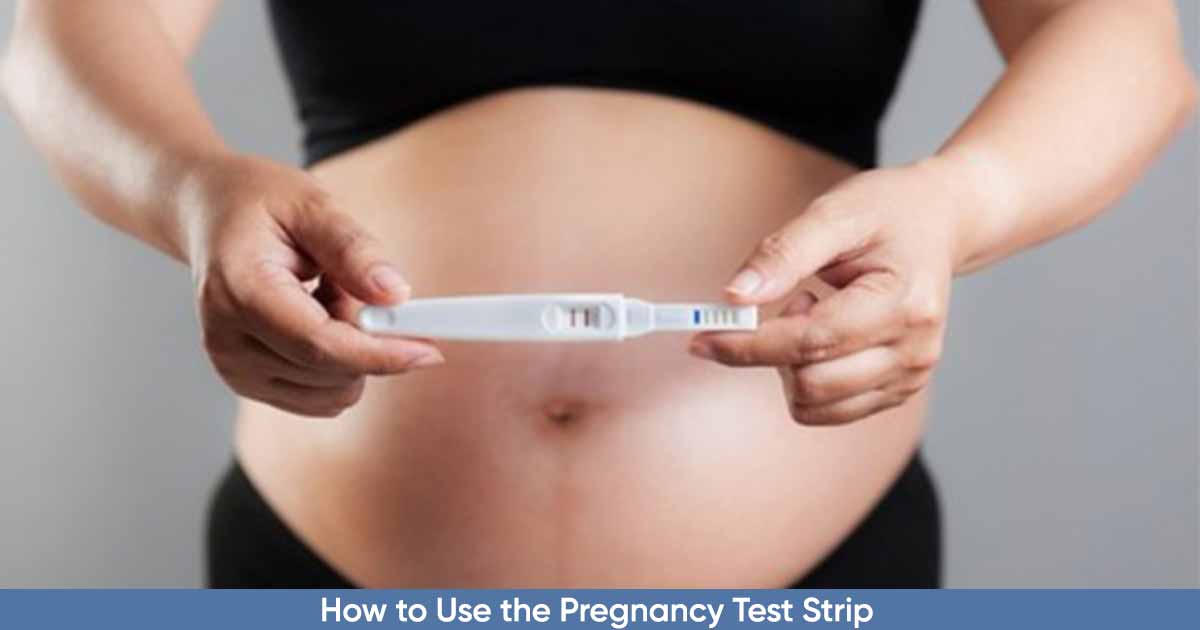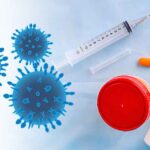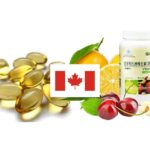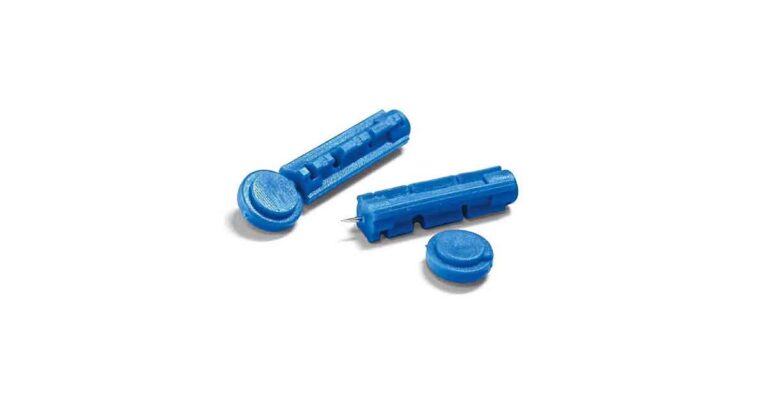A pregnancy test strip (PT strip), or hCG Pregnancy Rapid Test Strip, is a qualitative rapid chromatographic immunoassay that detects human chorionic gonadotropin in urine or serum or plasma and helps in early detection of pregnancy. It uses a combination of monoclonal and polyclonal antibodies in detecting the hormones.
Human chorionic gonadotropin (hCG), a glycoprotein hormone, is produced by the developing placenta soon after fertilization. The hCG levels can be detected in the urine, serum, or plasma specimens 7 to 10 days after conception. It keeps rising to above 100 mIU/mL by the first missed menstrual period, and can peak at 100,000-200,000 mIU/mL range about 10–12 weeks into the pregnancy.
The pregnancy test strip determines the levels of the hormone hCG (Human Chorionic Gonadotropin) in the urine sample of a woman. When a woman is not pregnant, the hCG level in urine, serum, or plasma specimens is low (typically 5mIU/ml), while in pregnancy, the level is typically 20mIU/ml, and could be detected by the strip. However, most PT strip is sensitivity to hCG levels of 10mIU/mL. The test could be done as early as four days before the start of the period.
A good pregnancy test strip result should not be interfered with substances and medications such as glucose, acetaminophen, atropine, hemoglobin, caffeine, ascorbic acid, triglycerides (serum), acetylsalicylic acid, bilirubin (serum and urine), and gentisic acid.
How to Use the Pregnancy Test Strip (PT Strip)
Sample collection: Collect the urine sample, preferably in the morning because it contains highest levels of HCG (you can still collect during the day). Use a clean and dry container.
Urine specimens with visible precipitates should be centrifuged, filtered, or allowed to settle to obtain a clear specimen for the test.
When a serum sample is used, the blood is collected without coagulant in a clean tube. The clear serum is separated from the blood and used early to avoid hemolysis.
You can store the urine or serum specimen at 2-8 °C for up to 48 hours before the testing. If the sample is needed for a longer time, freeze, and store below -20 °C
Result testing: Open the sealed pouch to remove the strip. Then place the strip vertically and straight inside the urine sample, while making sure the arrow marks point down. Make sure the urine level does not go above the maximum level line shown by the arrows on the test strip.
Allow the strip in the urine sample for at least 10 seconds, before removing and placing on a dry flat surface. Wait patiently for the colored bands to appear. A negative result could take up to five minutes to develop. Discard the test strip properly after use.
Result interpretation:
A procedural control, which is a colored line appearing in the control line region (C) is included in the pregnancy test strip.
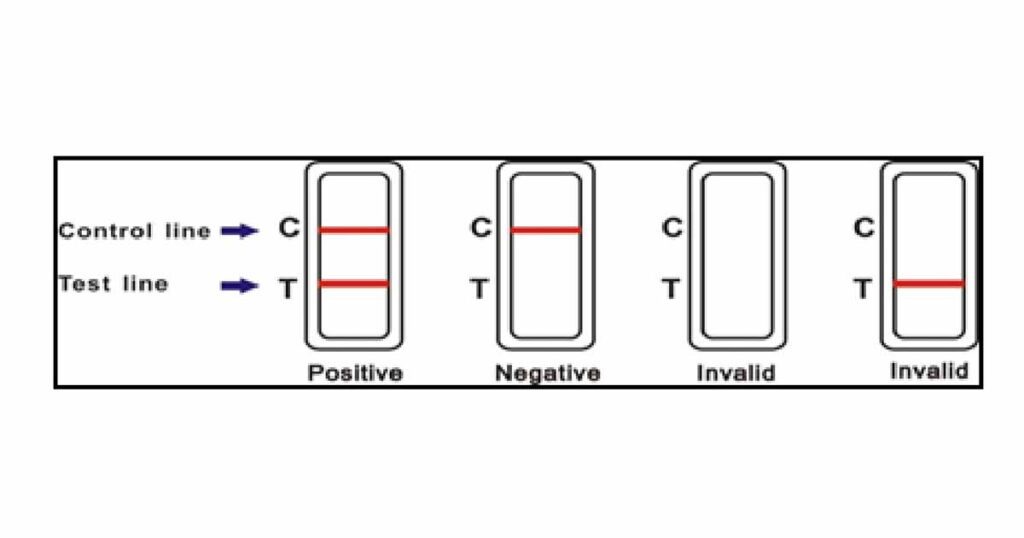
- Negative pregnancy test result: This is when only one colored line appear in the control line region (C) on the pregnancy test strip. However, negative result does not confirm lack of pregnancy as the test might have been done too early. If the period is overdue, test again after 72 hours. A confirmatory test with a new PT strip should be done after an interval of 48 hours.
- Positive pregnancy test result: When two colored lines occur on the PT strip (a line appears in the control line region (C), and another line should be in the test line region (T)). It means you are pregnant (your hCG level is above 20mIU/ml). One line might be fainter, especially when you test early and your hCG level is lower, but the thickness is similar.
- Invalid pregnancy test result: The result is invalid when no colored line appears after the test (no colored line appears in the control line region (C), even if a line appears in the test line region (T)). The causes could be due to faulty strip or the person not properly immersing the strip in the urine for at least 10 seconds. In such scenario, repeat the test but use a new strip.
Medications/Conditions that affect Pregnancy Test Strip Result
Fertility drugs: Some fertility drugs contain hCG (Novarel, Ovidrel, Pregnyl, and Profasi), and may affect the test result if used before testing. Hormonal contraception or fertility treatments such as clomiphene citrate could cause irregular period when they are stopped. This could prompt you to test early.
Medical conditions: Some conditions such as ectopic pregnancy, ovarian cysts, menopause, etc. Also, when you are recently pregnant, whether you carried it to full-term or not, you may get a false positive result. Other conditions that increase the levels of hCG include certain non-trophoblastic neoplasms like testicular tumors, prostate cancer, breast cancer, and lung cancer, and trophoblastic disease, can give false positive results in pregnancy test strip.
Loss of pregnancy: The pregnancy test strip result may be positive but later negative due to loss of pregnancy in early stages, as many first trimester pregnancies terminate for natural reasons. Repeat the test after 48 hours, if the test is weakly positive.
Those who are more than 6 weeks pregnant may have conflicting result due to high hCG levels (2 faint lines as a result of the hook effect).
READ ALSO: Anemia in Pregnancy: Major Causes, Risk factors, Prevention, and Treatment Options
False negative results may occur to samples of women who are pregnant for more than 5 weeks due to excess hCG variants in the urine, noticed in some uncommon cases of 10 weeks of pregnancy
Limitations of PT Strip
- The pregnancy test strip is a qualitative test, which means it does not test for the quantity or rate of increase in hCG.
- Dilute urine specimen with low specific gravity may not contain high levels of hCG.
- When the hCG is very low below the sensitivity of the test strip, it can give a false negative result.
- The level of hCG is very low (less than 50mIU/mL) in urine just after implantation. It may affect the result.
How to Handle the Pregnancy Test Strip
- Store in the closed pouch as packed, at a temperature between 2 – 30 °C, but do not freeze it.
- Do not use the pregnancy test strip after the expiration date
- Keep the sealed pouch or closed canister till you use.
- Discard the strip after use
References:
- https://clearandsimpletests.co.uk/products/pregnancy-strip-test/
- https://monlab.com/document/Muestras%20orina/IFU%20pruebas%20embarazo%20tira%20monlabtest%20EN.pdf
- https://atlas-medical.com/upload/productFiles/207002001/HCG%20Package%20Insert.pdf

